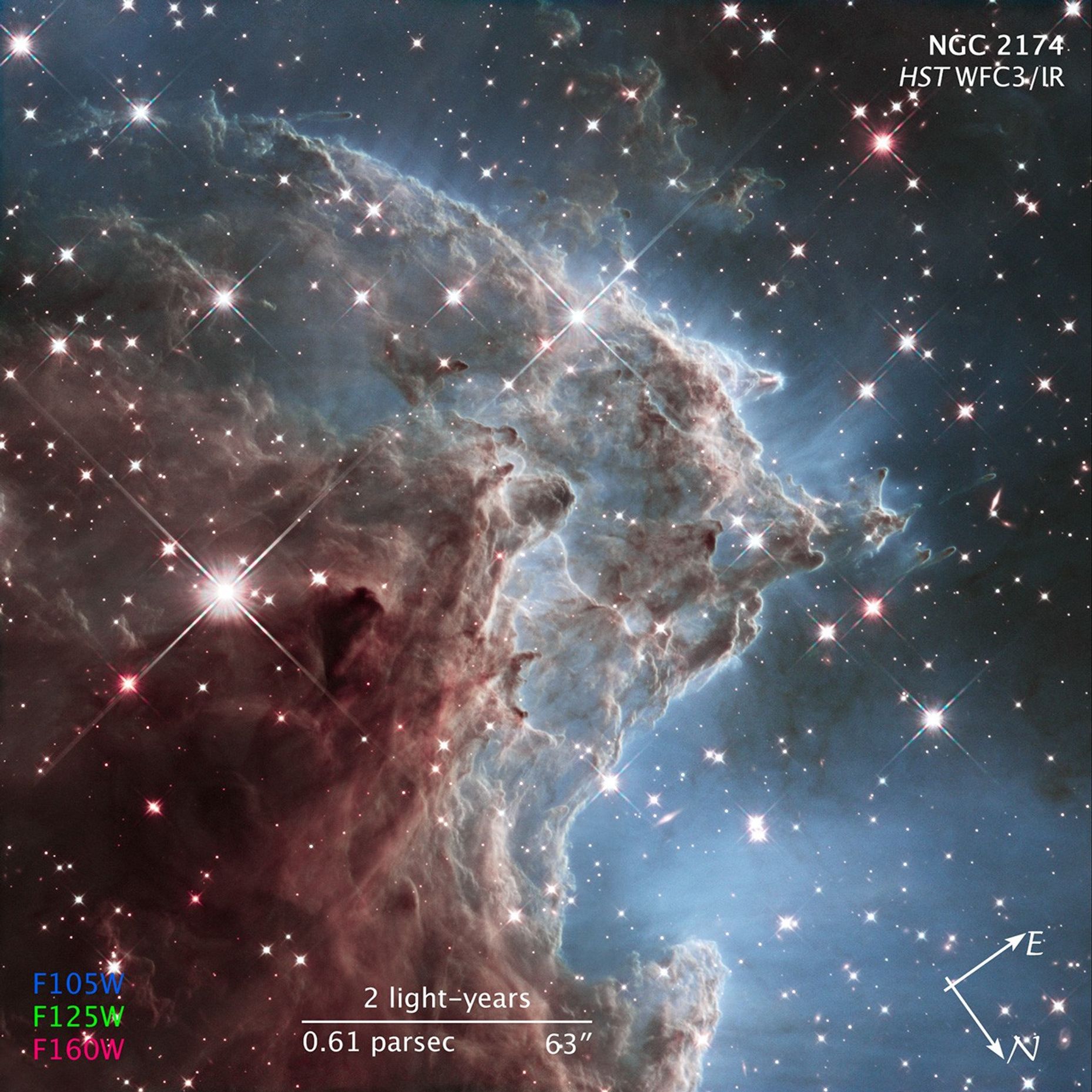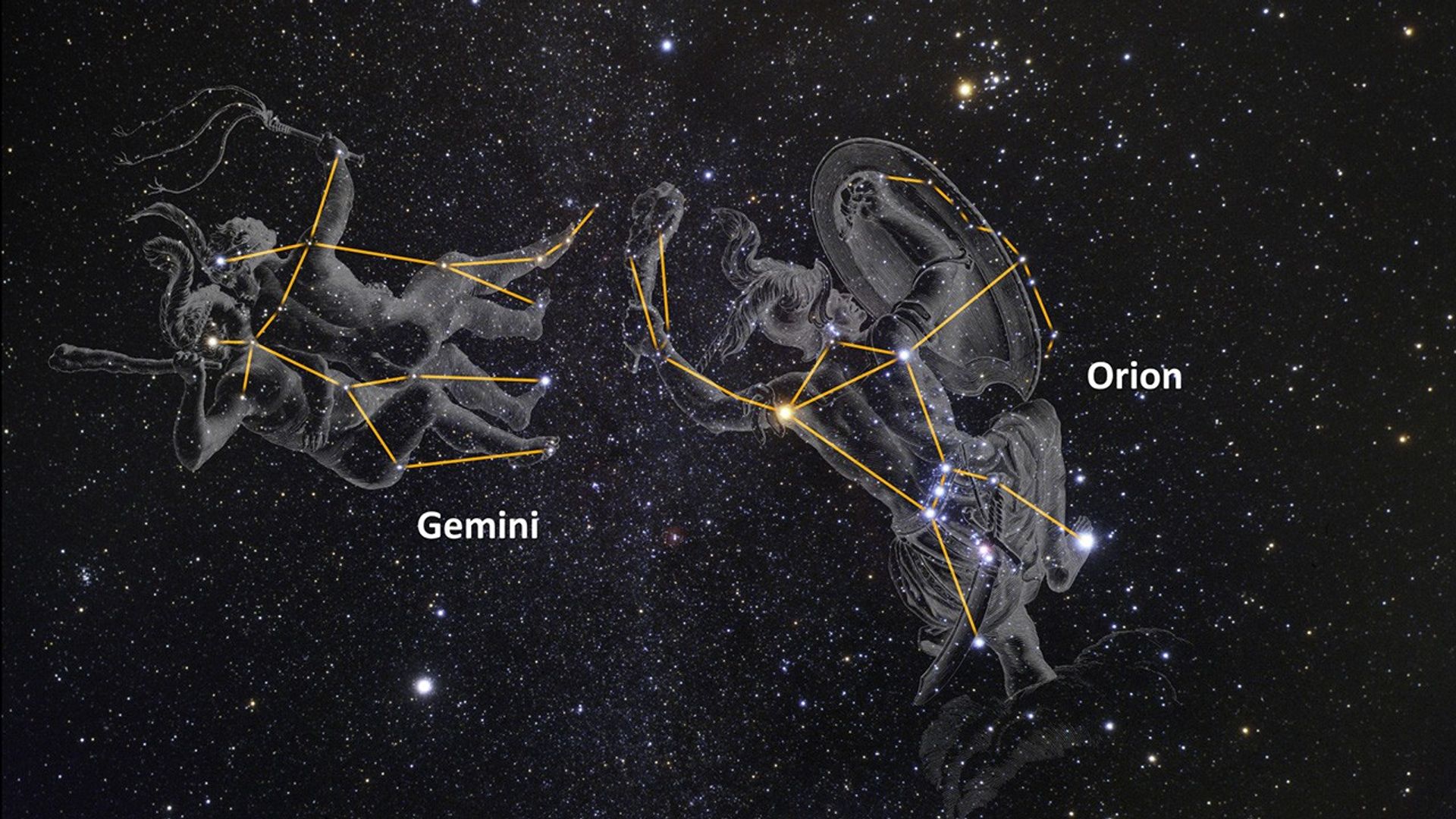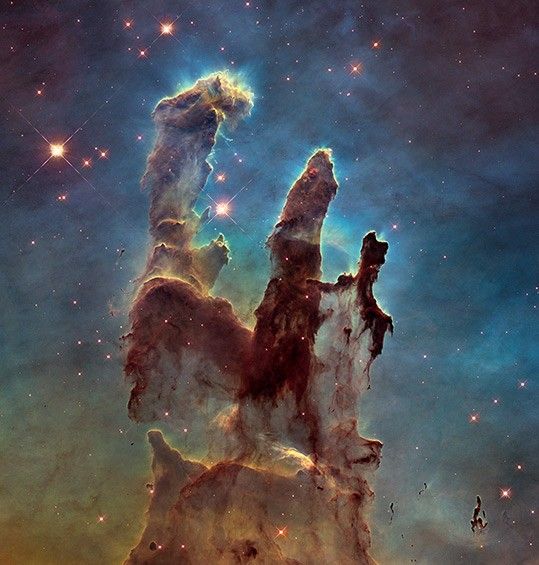1 min read
Location of the Hubble IR Detail in NGC 2174
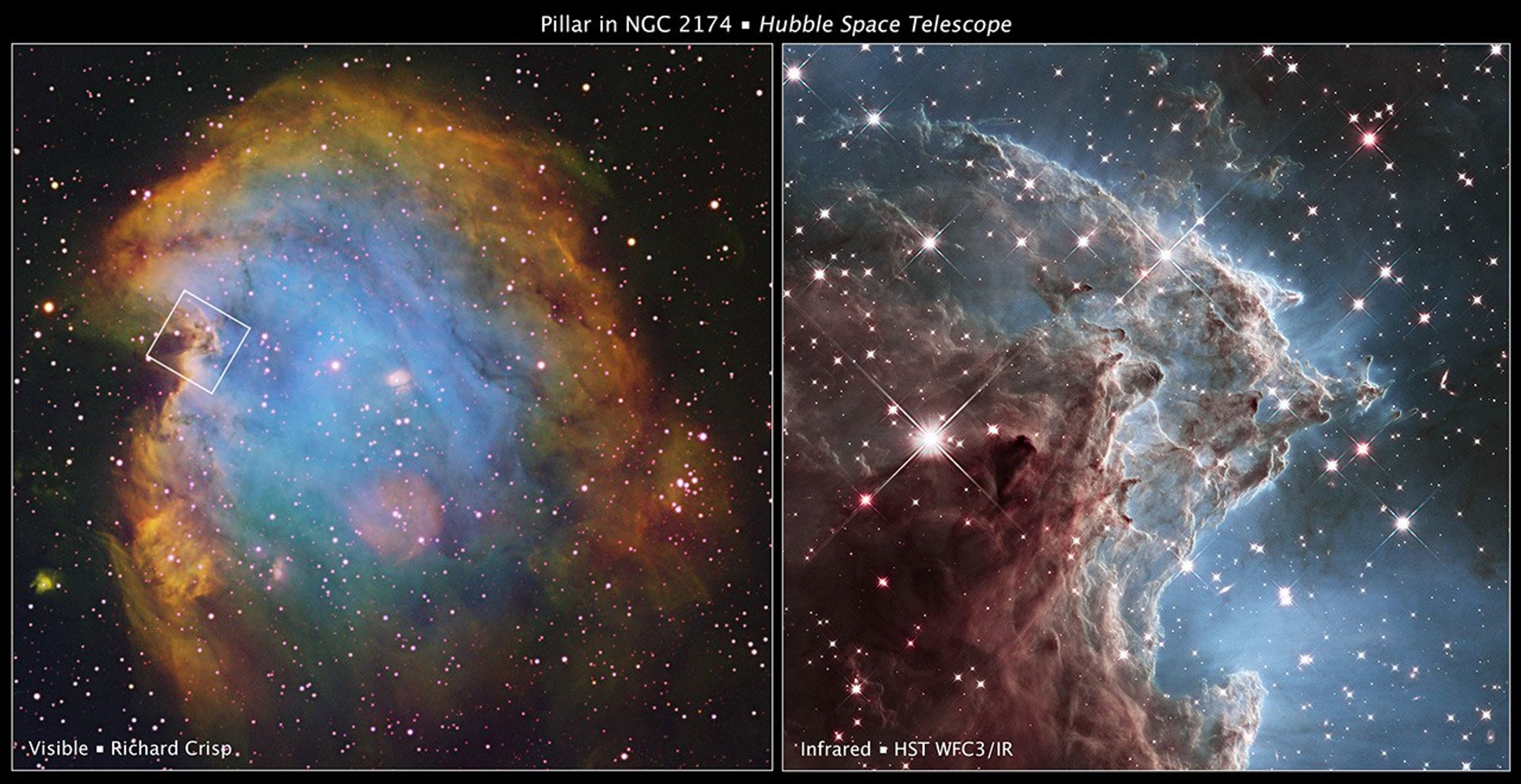
This graphic shows the location of the infrared image from the Hubble Space Telescope in a wider view of the region of NGC 2174. On the left is a ground-based image of the star-forming nebula in visible light by an amateur astrophotographer, with an outline showing the area of the detailed Hubble image. On the right is a small detail of a star-forming column in the nebula, made by Hubble's WFC3 infrared camera.
About the Object
- ConstellationConstellationOne of 88 recognized regions of the celestial sphere in which the object appears.Orion
- DistanceDistanceThe physical distance from Earth to the astronomical object. Distances within our solar system are usually measured in Astronomical Units (AU). Distances between stars are usually measured in light-years. Interstellar distances can also be measured in parsecs.6,400 light-years (2,000 parsecs)
About the Data
- Data DescriptionData DescriptionProposal: A description of the observations, their scientific justification, and the links to the data available in the science archive.
Science Team: The astronomers who planned the observations and analyzed the data. "PI" refers to the Principal Investigator.The Hubble data are from proposal 13623: Hubble Heritage Team/STScI/AURA: Z. Levay (PI; STScI), K. Noll (GSFC), and M. Mutchler, J. Mack, C. Christian, M. Livio, L. Frattare, J. Sokol, and S. Meyett (STScI). High-level science products for these data are available from the MAST archive.
- Object NameObject NameA name or catalog number that astronomers use to identify an astronomical object.NGC 2174, Monkey Head Nebula, Sharpless Sh2-252
- Object DescriptionObject DescriptionThe type of astronomical object.Star-forming Region
- Release DateMarch 17, 2014
- Science ReleaseHubble Celebrates Its 24th Anniversary with an Infrared Look at a Nearby Star Factory
- Credit
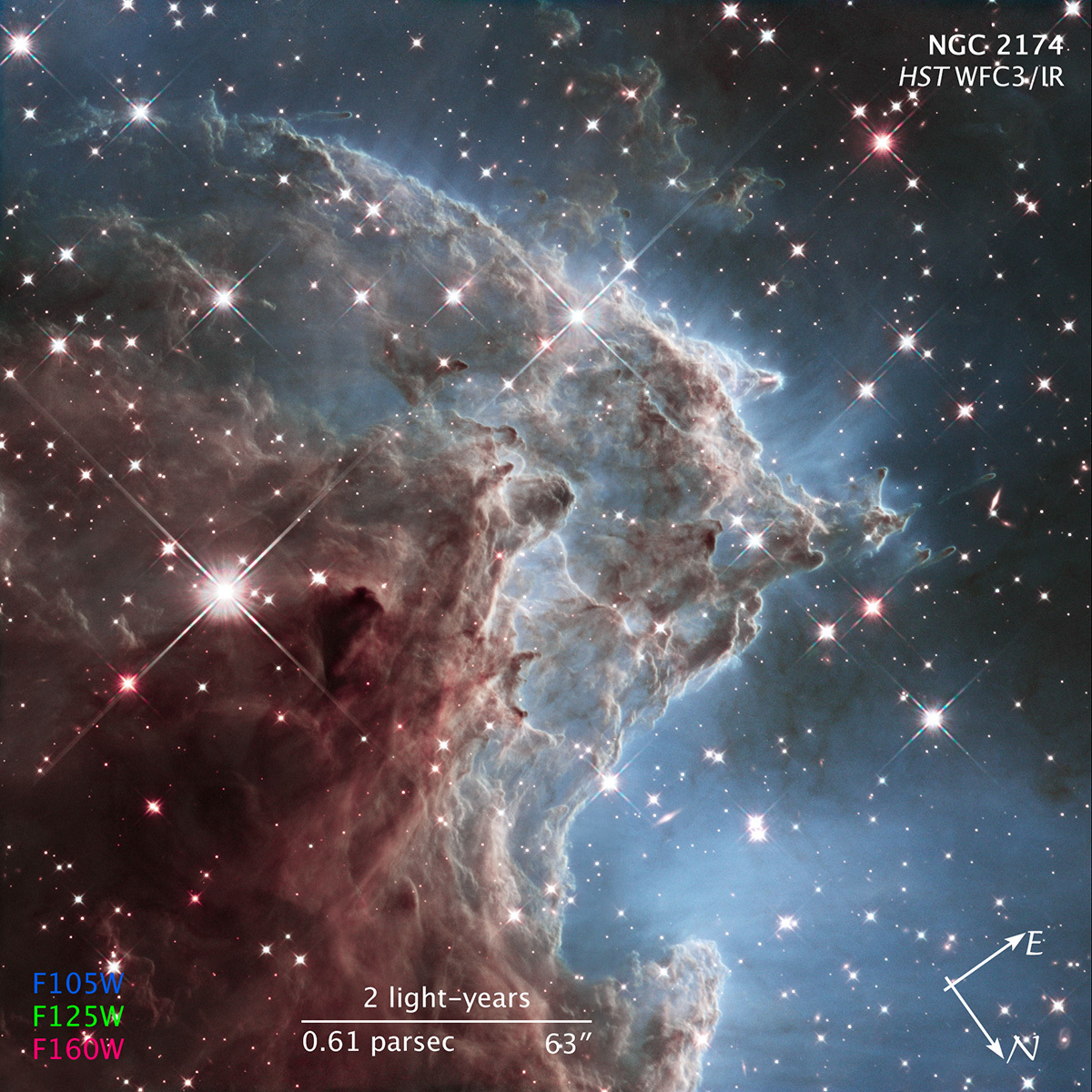
Compass and Scale
Compass and ScaleAn astronomical image with a scale that shows how large an object is on the sky, a compass that shows how the object is oriented on the sky, and the filters with which the image was made.
Related Images & Videos

Visible and Infrared Comparison of NGC 2174
This graphic compares visible-light and infrared views of the same detailed area in the star-forming nebula NGC 2174 from the Hubble Space Telescope. On the left is a visible-light image made by WFPC2 in 2001 and on the right is an image made by the WFC3 infrared camera....
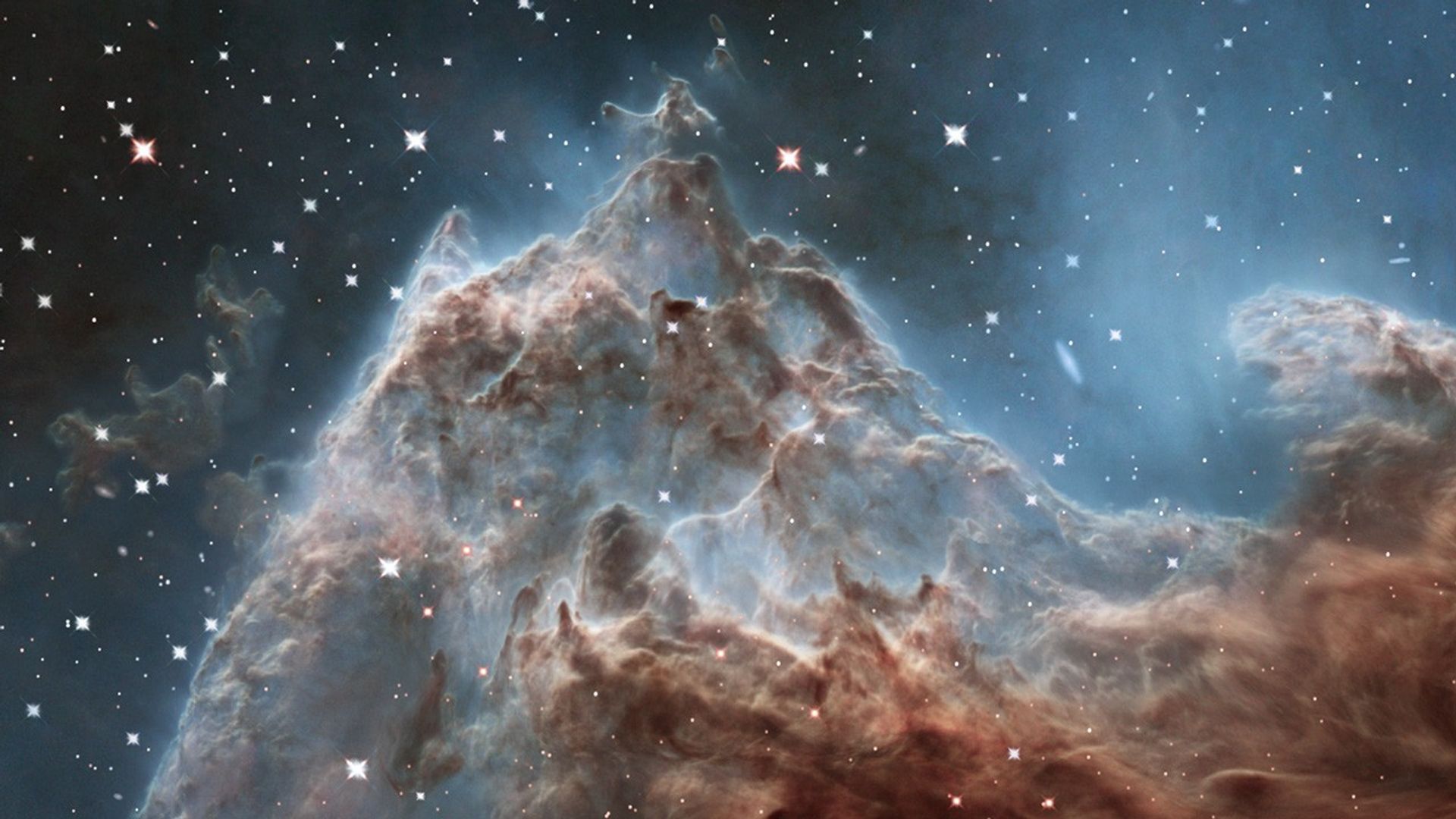
NGC 2174: Visible 2D Zoom and Infrared 3D Reveal
This video showcases visible and infrared light views of a collection of pillars along the edge of the star-forming region NGC 2174. The sequence begins with a view of the night sky near the constellation of Gemini and Orion. The view zooms through observations from the...
Share
Details
Last Updated
Aug 17, 2025
Contact
Media
Claire Andreoli
NASA’s Goddard Space Flight Center
Greenbelt, Maryland
claire.andreoli@nasa.gov




























